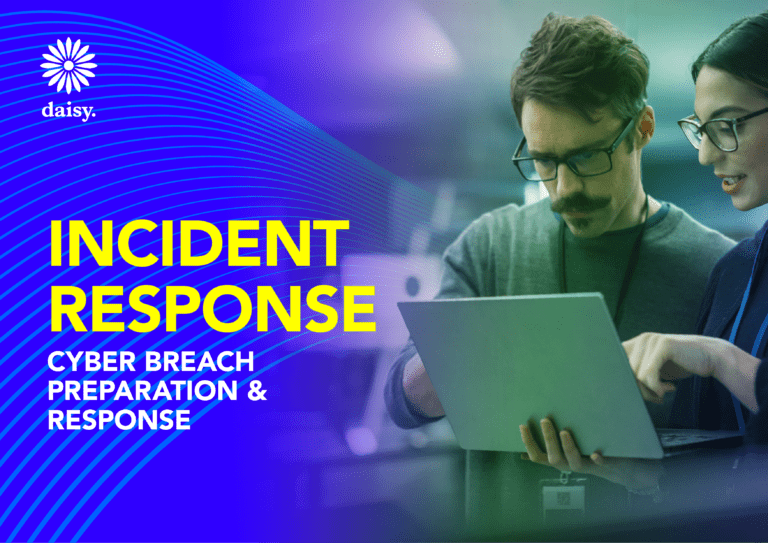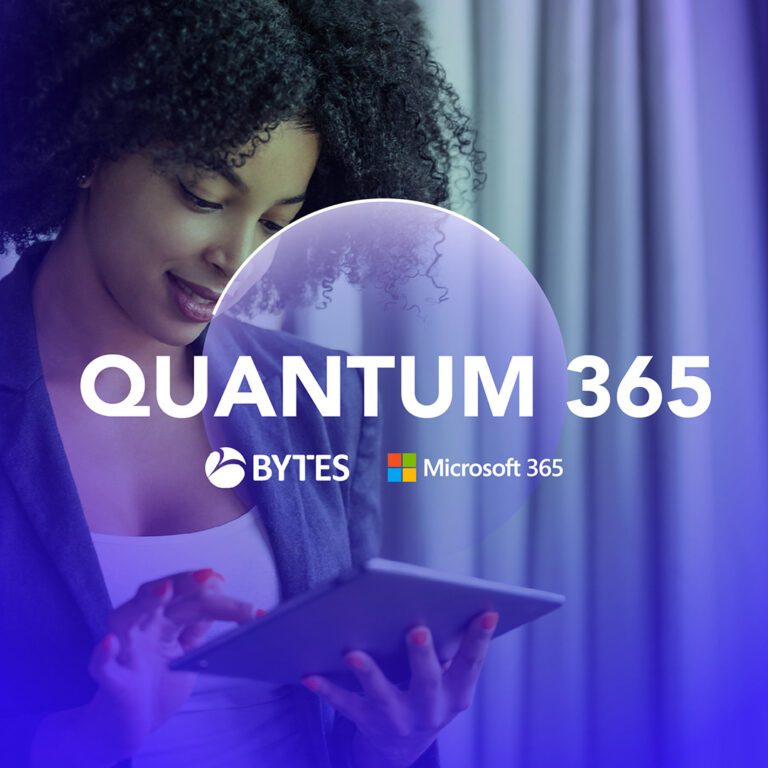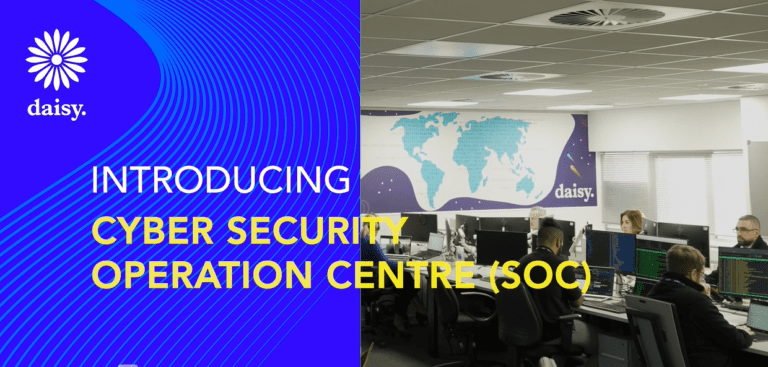Daisy Corporate Services proudly announces the successful recertification of ISO 22301, the international standard for business continuity management systems. “The recertification process every three years serves as a testament to our...
Resource Centre
Take whatever you need
- Home
- /
- Resource Centre
We are thrilled to announce a new transformative strategic partnership between Vodafone and Daisy Corporate Services, set to unfold over the next 3 years. Our collaboration signifies a strategic alliance...
Vodafone and Daisy Corporate Services Form Strategic Partnership
Navigating the transition: The VMware transition to a subscription-based model under Broadcom brings about significant changes in VMware’s offerings and pricing structure, and while you may be thinking of other...
Navigating the VMware to Broadcom Transition
Nowadays, the reliance on wireless devices and the need for seamless communication and data exchange have made wireless connectivity an increasingly essential aspect of our lives. But what exactly is...
The Power of Wireless Connectivity: Empowering Seamless Communication and Data Exchange
Organisations worldwide are driving business growth and success like never before by embracing cloud-based solutions. To keep pace with your peers, it’s more important than ever to know how to...
10 Ways to Get the Most Out of Your Microsoft 365 Investment
Daisy, a leading innovator in the tech industry, proudly announces its attainment of the coveted ISO 50001 certification, underscoring its unwavering commitment to sustainability and operational excellence. This achievement showcases...
Daisy Takes the Lead in Energy Management: ISO 50001 Certification Awarded
Our Head of Propositions and Strategy Consulting, Andy Bevan is joined by Phil Alsop, Editor of Digitalisation World Magazine to discuss recent research findings which reveal that two-thirds of IT...
Video Interview: Dealing with IT infrastructure complexity in a hybrid cloud world
The key to achieving success lies in your ability to deliver fast and reliable connectivity that efficiently connects your operational systems and serves your customers seamlessly. Businesses like yours are...
Supercharge Your Business Connectivity
Market leaders are continuously driving innovation and set the trends for the industry. Cisco and Fortinet are prime examples of companies that have established themselves as frontrunners in the software-defined...
Market Leaders and Trends: SD-WAN
In this article, we will delve into the intricacies of SD-WAN and explore its relevance in the current market, focusing on key drivers of adoption and the importance of choosing...
Revolutionising network connectivity and security – The power of SD-WAN
Unravelling the Mysteries of SD-WAN: Common Questions Answered The intriguing landscape of SD-WAN has gained significant attention in recent times. As businesses continue to prioritise network adaptability and efficiency, the...
SD-WAN FAQs
Ransomware continues to be one of the biggest threats to all organisations and shows no signs of going away any time soon. In fact, 66% of organisations were affected by Ransomware...
Cyber Security 101: Ransomware
Drive sustainable digital transformation with solutions that accelerate business outcomes. Most companies are undergoing digital transformation to accelerate business outcomes. Leading organisations are embracing sustainability as part of their next-gen...
Advance Your Sustainable Future
Get the cloud experience everywhere This guide outlines the challenges organisations face in managing diverse IT environments and the need to bring the flexibility and efficiency of the cloud to...
Cloud Everywhere: Unifying IT Landscapes for Efficiency and Security
Regardless of industry, if you’re a business or IT leader today, you’re seeing the emergence of the digital transformation divide: a gap between those organisations who’ve sprinted ahead and those...
The Transformative Power of Storage-as-a-Service (STaaS): Three Essential Elements
In today’s increasingly demanding environment, citizens require more support than ever before, underscoring the vital importance for all public sector organisations to strive for maximum efficiency and responsiveness. What’s the...
5 Insights to Build Excellent Citizen Communications
Today’s learning environment differs significantly from just a few years ago, yet despite its value, the educational sector faces external pressures and must adapt to an ever-changing world. It’s essential...
Keeping Ahead of the Connectivity Curve in Education
The pandemic showed that digitalisation, underpinned by the latest in communications technology, can provide answers to seemingly intractable problems. Much has already been achieved, but it is now vital to...
Reforming for Recovery: Improving Connection in Healthcare
Supporting staff, delivering effective services and improving lives while overcoming technology silos Since 2020, organisations have raced to adopt innovations like cloud communications. While plenty of good came from this...
Public Sector’s Communication Conundrum Report
By Neil Hall, Strategy Consultant at Daisy Technological innovation is leading the way in how today’s accounting is done. From improving efficiency and enhancing collaboration to improving data security and...
Is Your Technology Maximising Your Accountancy Business Potential? The Top 7 Benefits You Should Expect
It is now common practice for organisations to operate in multiple clouds, with remote access to resources becoming more prevalent. However, this creates networking and security challenges, as the attack...
What to do When Multiple Clouds Create Multiple Challenges
Imagine this, it is a typical Tuesday morning, and you step into your office only to discover that a sudden power outage has left your workspace in complete darkness. Computers...
Disruptions Happen: Exploring Your Options
11 steps to start your cloud migration strategy today. Migrating your workloads to the cloud can offer numerous benefits, but the process can be a daunting task. Moving and managing...
Cloud Migration Ultimate Checklist
Daisy Corporate Services has become a founding member of nationwide charity initiative The Big Goal, as part of an action plan to support some of the country’s most vulnerable and...
Daisy Corporate Services Takes to the Football Pitch with the Goal of Supporting Disadvantaged Young People
Achieve true collaboration with Microsoft Teams With many of us now working from home the highly-functional Microsoft Teams app comes into its own. Providing immediate access to all your apps...
10 ways to increase homeworking productivity with Microsoft Teams (Guide)
The integration of world-class customer experiences and advanced calling features into Microsoft Teams represents a significant advancement in organisational productivity. Microsoft 365 serves as a fundamental platform for employee efficiency,...
Boost your Microsoft Teams with a rock-solid and scalable calling solution
How savvy are you, when it comes to managing your firewalls?
Next-Generation Firewall Management Quiz
Defending your organisation against cyber attacks can be an exhausting battle. Threats evolve on a daily basis, forcing you to constantly adapt in order to keep them at bay. This...
Why risk getting burned by a cyber breach? Top 5 considerations for firewall management
Microsoft 365: an investment to be nurtured Microsoft 365 is widely acknowledged to enhance productivity and innovation through its range of intelligent apps and collaboration tools. However, consistently optimising its...
Microsoft 365: A Definitive Way to Maximise its Business Impact
Despite sustainability and energy efficiency ranking as important, Daisy study finds many IT leaders lack real confidence in meeting their green targets Almost two-thirds (63%) of IT leaders say their...
Legacy infrastructure creating sustainability nightmare for 63% of IT leaders
Introduction to Network Security and Firewalls In our digitally connected world, securing network services from unauthorised internet access is paramount. This is where the concept of firewalls, especially boundary firewalls,...
Cyber Essentials – Boundary Firewalls (Guide)
With things becoming increasingly connected, businesses rely heavily on wireless networks to drive productivity and foster innovation. As the need for faster, more reliable, and secure wireless connections grows, it...
Unlocking the Future of WiFi with Cisco Catalyst Wireless
Learn how upgrading to Windows 11 can positively affect your business and employees As businesses have evolved to face new challenges and requirements, ensuring collaboration and finding ways to foster...
Why it’s time to upgrade to Windows 11 now [VIDEO]
Fixing a no internet connection issue can depend on various factors such as the type of connection (WiFi, Ethernet, mobile data), the device you’re using, and the specific cause of...
12 Ways To Fix a No Internet Connection Issue
Embracing the digital revolution through partnership The tertiary education sector is rapidly adopting a “digital first” model, as universities and other institutions rethink how teaching is delivered and how students...
Making the Education Sector Even Smarter Through Technology [Guide]
Introduction Increasing digital dependence is a key factor for the continued rise in the costs of cybercrime globally. The expanding operational technology landscape, rapid emergence of generative AI and on-going...
Your Quick Guide To Managed Detection And Response
Today, businesses are increasingly turning to cloud solutions to enhance their operations and drive innovation. However, managing and securing complex cloud environments can often be a daunting task for IT...
Discover the Power of Cloud Monitoring
Windows 11 is the latest version of the Windows operating system developed by Microsoft. It was officially announced by Microsoft in June 2021. Windows 11 builds upon the foundation of...
Windows 11 Requirements – CPU, RAM, Storage, Graphics and Display
No business is safe from data breaches and cyber security hacks, our Security Operations Centre (SOC) helps you stay one step ahead of cyber threats. Join Lyndsey Charlton, our Chief...




































